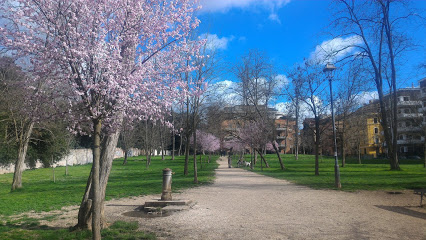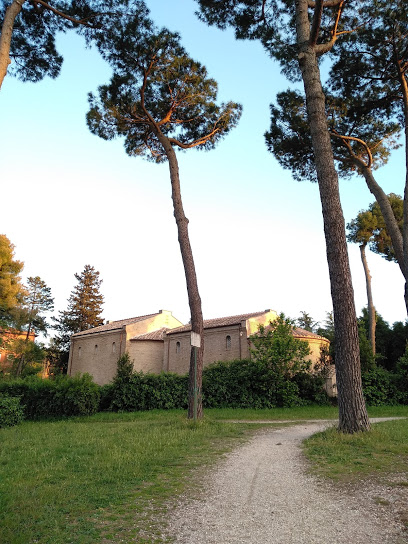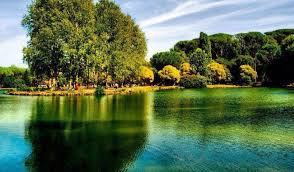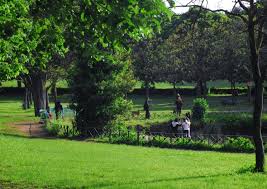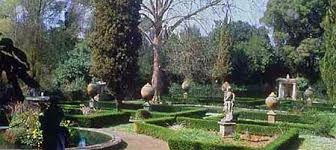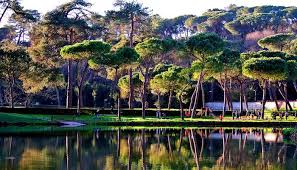The large garden, decorated with many new and select classical buildings such as the Flora Temple, the Polisina Villa, the Royal Stables and the Swiss Chalet, the Gothic Tower with oak woods, cork terraces, pine forests and meadows, according to the traditional informal configuration of the English Garden. The regional extension of Villa Ada, characterized by flora and the gradual re-development of its ecological heritage, which was implemented through the careful recovery of the original plant structure and the reconfiguration of animals, makes it an ideal place for walking and jogging in nature; at the end of the 1990s, , Where you can enter the part that remained more than the point of view of flowers and wildlife, and walking in a forest area characterized by large patches of pine, and oak trees, laurel and chestnut trees inhabited by squirrels, hedgehogs, rabbits and large communities of birds, which found The correct habitats in this park.
The villa, known primarily as the Savoy residence, which it owned from 1872 to 1878 and from 1904 to 1946, has many buildings of various types and ages: Casale, La Finanziera, on a hill of the same name, the headquarters The Casillas delle Cavalle Madri, which was so named for its destination, during the Savoy period, as a haven for wives about to be born, coming from the stables of Quirinale; Villa Polisina, the Royal Stables, the Villa Riale, and the Casino Palavicini, the Temple of Flora, and Tribune, and buildings along the border wall adjacent to Via Salaria and C. For a basket of factories associated not only with the countryside but also with residential jobs today owned by the state property office, individuals and municipal.
The current area of the villa consists of 160 square meters and corresponds to an area of great historical importance, inhabited since the Roman era. On a hill today partially occupied by Fort Antenne, overlooking the confluence of the Tiber with Aniene, the ancient city of Antemnae (ante amnem = in front of the river), whose name led to the current geographical names. The vast area of the park was divided to the left of the Via Salaria, extending to the confluence of the Tiber with the Anin River, in the second half of the 18th century, to countless areas and estates, with vineyards, forests, arable land and cane beds, And gardens. The partial unification of these characteristics is due to Prince Luigi Palavicini in the late 1880s. The French architect Auguste Chevalle de Saint-Hubert (1755-1798) designed the French architect Auguste Chevalle de Saint-Hubert (1755-1798), who designed a garden decorated with typical garden plants at the time. .
Among the garden furniture of its architectural quality is the 18th-century café at the Pallavicini Casino, known as the Temple of Flora. His style, with Brunau and new classic façades, features a flat, back-lit object reflecting the echo of columns, overlooking a main runway with a cast iron fountain in the late 19th century, as a result of a romantic reworking of the place.
In the Senso presidency plan of 1839, a large part of the estate actually appeared in Palavicini as the property of Botziani in 1872 sold to King Vittorio Emmanuel II of Savoie. Sovereign, determined to turn the estate into suburban housing for the Savoy family, following the transfer of the court to Rome, the new capital of the kingdom, decided to expand immediately, with the acquisition of many of the neighboring vineyards.
Thanks to the intervention of landscape architect Emilio Richter, director of villas and royal gardens, the property, from 1874, was converted into a rural English garden. In just six years, Casino Nobile, now the headquarters of the Embassy of the Arab Republic of Egypt, was built, and residential buildings, stables and old houses were restored, and many rural buildings were demolished. The countryside turned into a huge park, home to exotic plants and decorated with small buildings such as the Swiss Chalet and the Gothic Tower.
On the death of the king, in 1878 the villa was sold to a Swiss-born Tilner, a strong manager of the Royal House, named Ada in honor of his wife. After just over twenty years, in 1904, the complex was repurchased by Savoie, who initiated new resettlement interventions. In 1941-1942, an anti-aircraft depot was built in the area about 350 meters from the royal residence to house the king and his family.
In the fall of the monarchy in 1946, the part of the villa that was the personal property of the king remained his heir, while ownership of the royal house became public property and after some adjustment interventions that changed it incorrectly, in 1957, it became part of the villas of Rome Thus freely accessible. Instead, the special part has been left in a state of total abandonment and still retains many of the ancient plant's effects, including the 18th century informal garden.
In recent years, there have been some important restoration interventions with regard to the archaeological gate at Via Salaria, the Guardian Casino attached, the cafe (unfortunately in a serious deterioration) and the Cast Iron Fountain. In March 2016, after the restoration of Roma Sotterranea, an anti-aircraft cache was opened to the public and can be visited at the time of booking.


